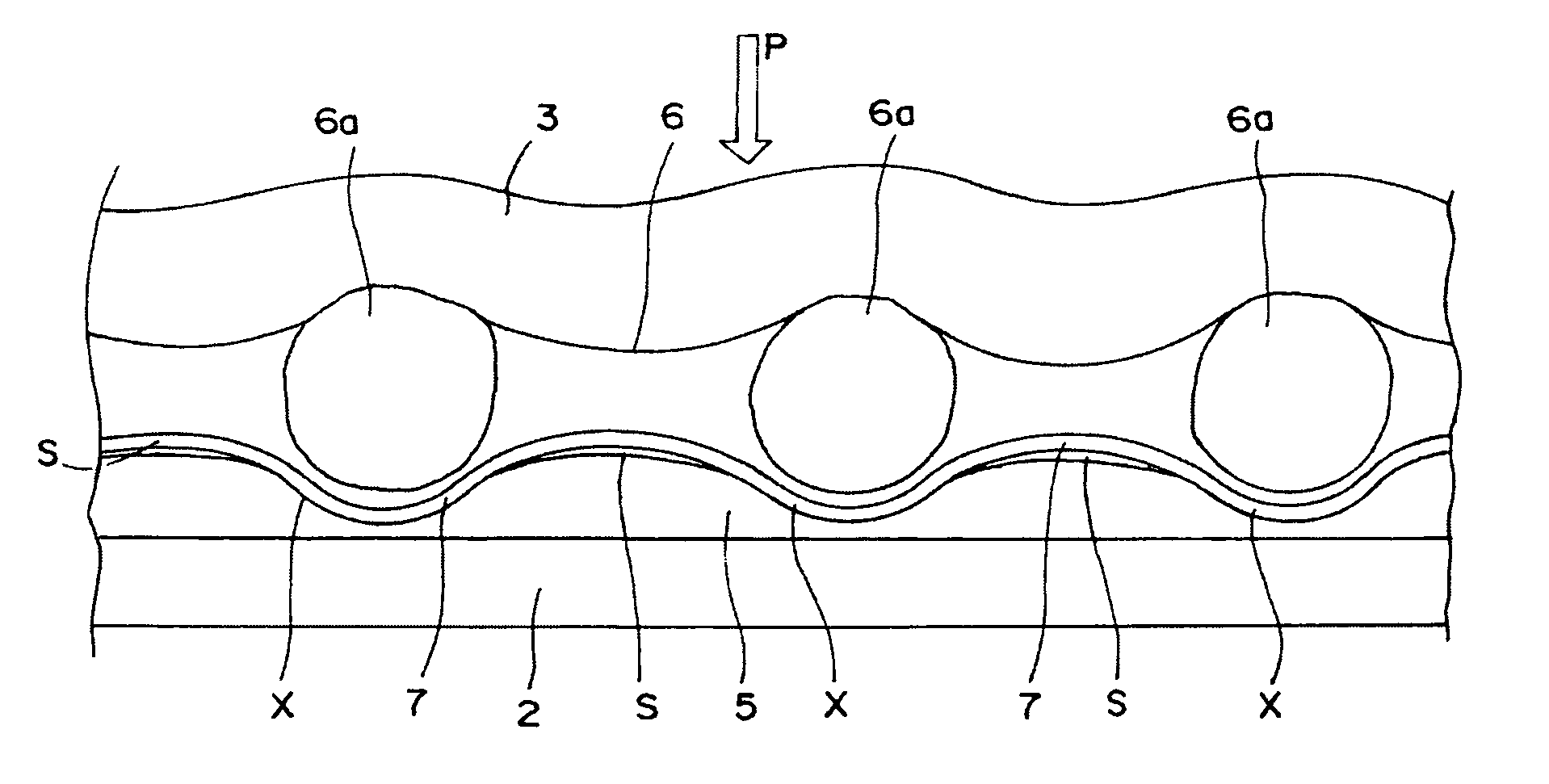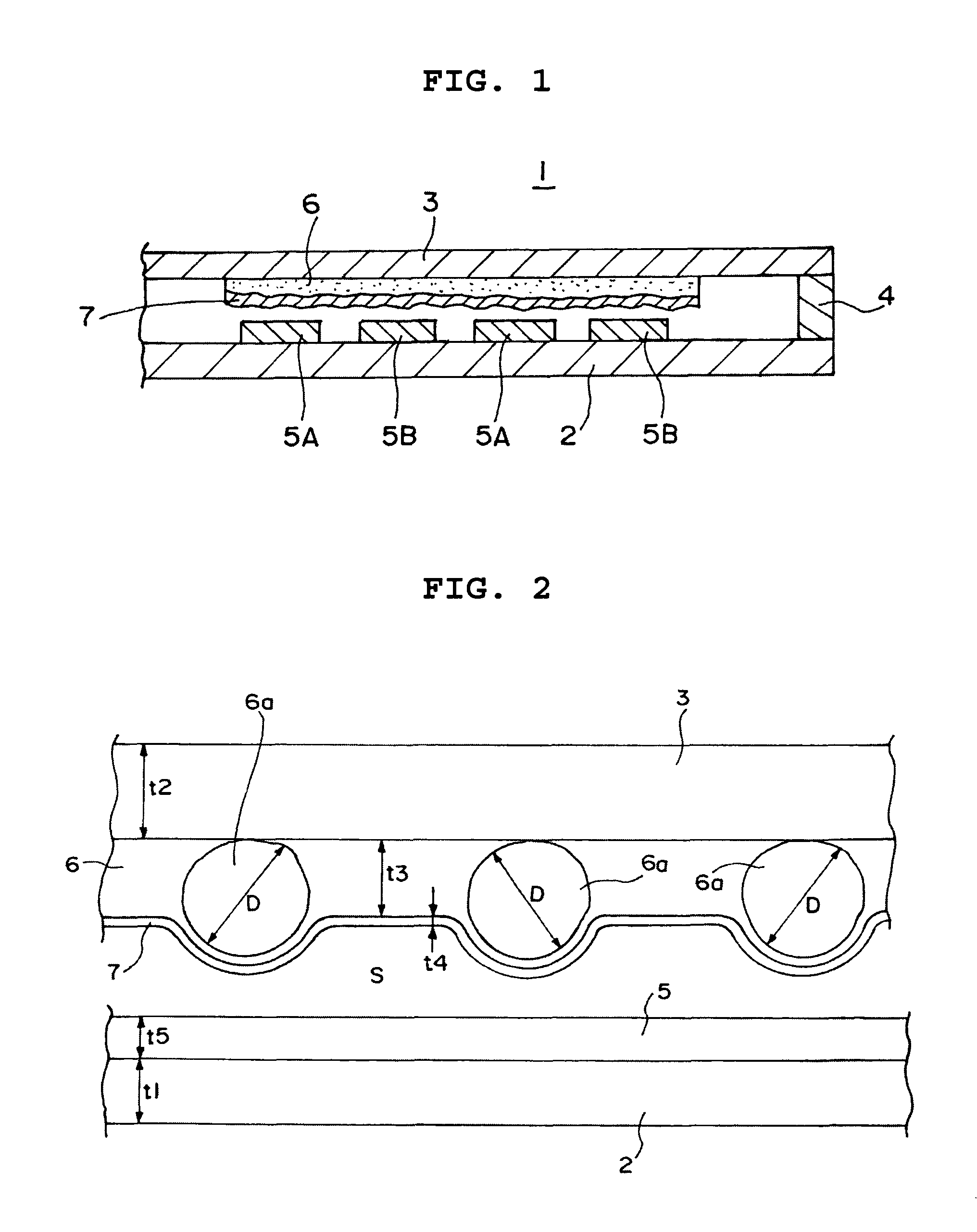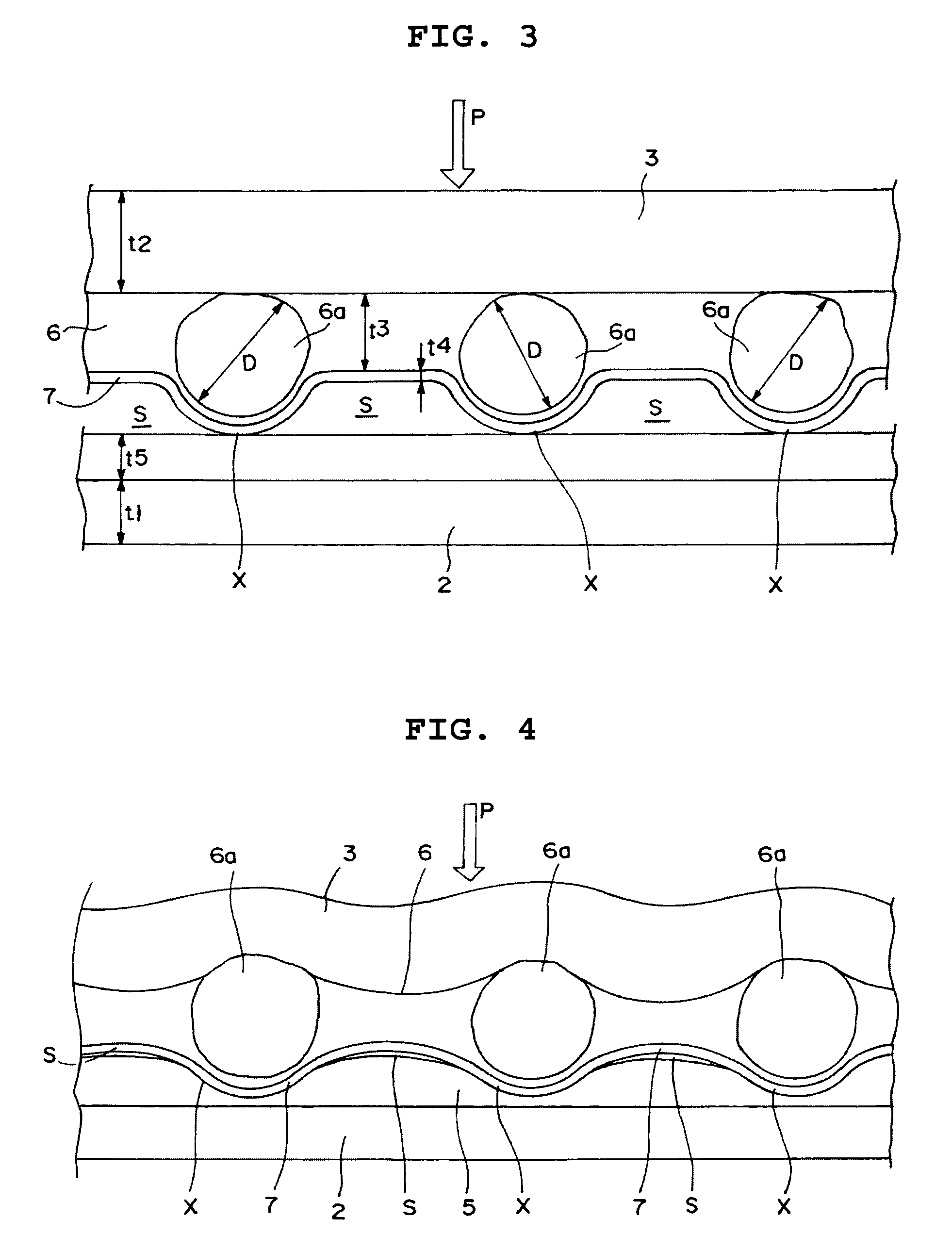Pressure sensor and method of manufacturing the same
a technology of pressure sensor and manufacturing method, which is applied in the direction of fluid pressure measurement, acceleration measurement using interia force, instruments, etc., can solve the problems of narrow detection range of load and inability to detect small loads, and achieve the effect of smooth change of resistan
- Summary
- Abstract
- Description
- Claims
- Application Information
AI Technical Summary
Benefits of technology
Problems solved by technology
Method used
Image
Examples
example 1
[0072]Using a 125 μm glass epoxy resin for a first substrate, a pair of electrodes (interdigital electrodes) made of copper were formed on a surface of the first substrate by etching. A thickness of the electrodes was set to 38 μm. Using a polyethylene terephthalate resin sheet with a thickness of 125 μm as a second substrate, an uneven layer 6 containing silicon dioxide particles was formed on a surface of the second substrate. The above-mentioned uneven layer 6 containing a polyester-based resin and 10% by weight of silicon dioxide particles with a particle diameter of 50 μm was formed to have a thickness of 20 μm.
[0073]Then, a resistor layer 7 was further formed on a surface of this uneven layer 6. A material of a phenol resin containing 5% by weight of silicon resin and 5% by weight of carbon powder was used for the resistor layer 7. A thickness of the resistor layer 7 was arranged to be 10 μm.
[0074]As for the thus formed pressure sensor, change in resistance to change in load w...
PUM
 Login to View More
Login to View More Abstract
Description
Claims
Application Information
 Login to View More
Login to View More - R&D
- Intellectual Property
- Life Sciences
- Materials
- Tech Scout
- Unparalleled Data Quality
- Higher Quality Content
- 60% Fewer Hallucinations
Browse by: Latest US Patents, China's latest patents, Technical Efficacy Thesaurus, Application Domain, Technology Topic, Popular Technical Reports.
© 2025 PatSnap. All rights reserved.Legal|Privacy policy|Modern Slavery Act Transparency Statement|Sitemap|About US| Contact US: help@patsnap.com



